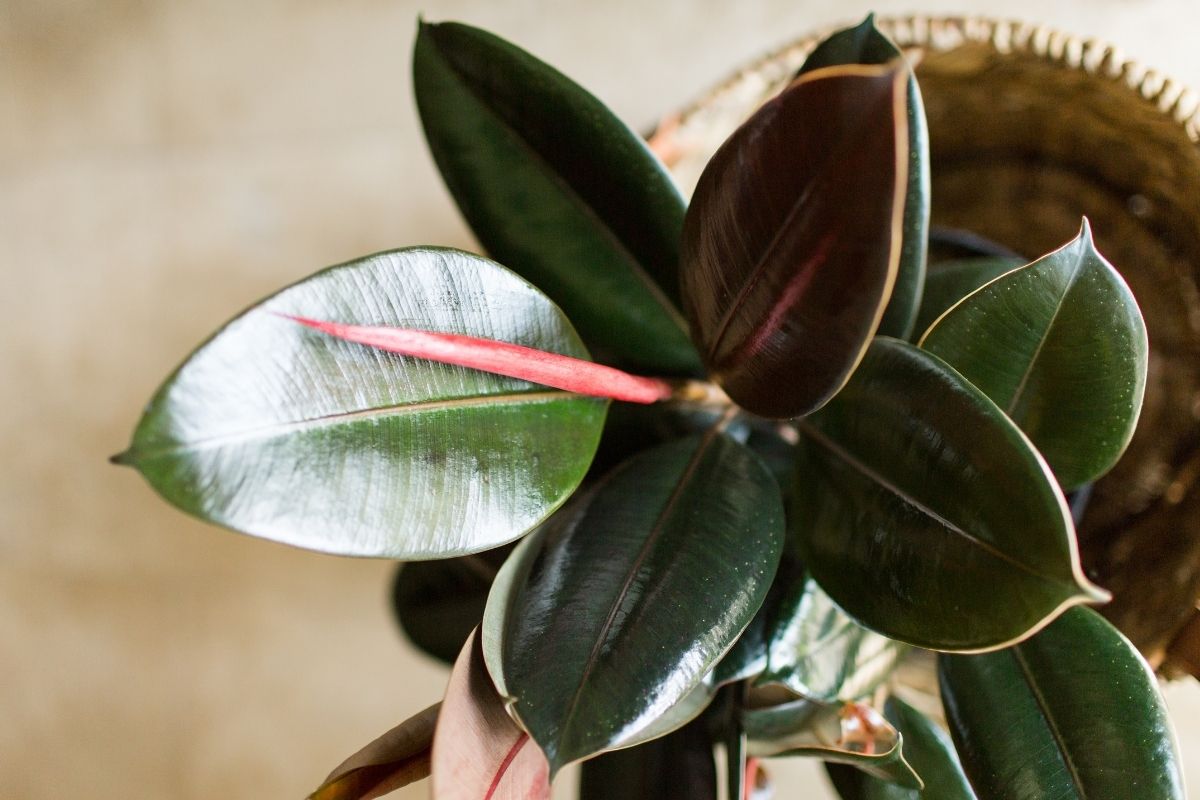There are so many plant lovers now and enthusiasts turn to selling cuttings when their pothos vines are getting long or giving up parts of their indoor plant collection to make more room for plants. (Who is with me on this, please let us know how you make room for more plants!)
But whether you have a philodendron or peperomia, or any kind of plants for that matter, at one point there will be yellowing leaves or leggy branches. Luckily, there are ways to make plants healthy. It’s just a matter of figuring out what your plants need.
We talked to Shana Taylor, the owner of Soil Vibes in Midtown Manhattan, about turning her hobby into a full-fledged business. She has lots of tips on how to care for plants, especially a rubber plant, and how to make a rubber plant bushy.
How has your journey been and when did you open your shop?
It all started with a bonsai kit that I first took care of and then when I moved to the City a friend gave me two houseplants as a housewarming gift. And you know how plant people are, from there I just got more and more plants!
At first, I was selling plants in front of my apartment on the weekend and then I built my website and got into posting on Facebook marketplace. People from out of state started ordering and I shipped to as far away as Alaska and Guam.
I was working at the post office while doing this side hustle. I would pack the plants for shipping at night and then go to work at 8 in the morning. One day last summer I saw this shopping court and I decided to ask about renting a booth.
They put me on the waitlist and I finally moved in October. I quit my job and I am doing this plant business full time. It is very exhausting but I am proud to be a Black female entrepreneur.
What kind of plants do you sell? What are people looking for?
You know what, a lot of people are looking for standard houseplants like cute pothos, snake plants, spider plants, or even rubber plants. I do have some rare plants but they are hard to find at a good price point. I try not to sell expensive plants, I want my prices to be accessible.
I also hand-pick each and every plant. I really make sure that I choose and sell good plants.
How do you take care of your plants?
Honestly, I do not use fertilizer on a plant. I guess I just have the right growing conditions – good light and a good watering schedule. But I do use insecticide, like Bonide insecticidal soap. It doesn’t burn the leaves and I haven’t had a bad infestation. Any new plants get sprayed down and then I’m proactive about spraying to keep pests away. I also use Mosquito Bits, I let it soak in water and use that to water plants. It will kill any larvae that are in the soil.
So, let’s talk about how to take care of a rubber tree plant. What are the right growing conditions for it to thrive?
What I’ve noticed is that a rubber plant doesn’t like to be over-loved. When it comes to watering I always tell people to start every 10 days and then observe the plant. The leaves will tell you what the rubber tree plant needs. If the leaves are droopy water more often and vice versa. If the soil is moist then let it dry out a little bit before watering again.
They also like indirect light, so they should be placed by a window. But they shouldn’t get direct sunlight because the leaves might burn. It is a ficus plant originally from Asia and they do not like the cold, so for colder climates, the rubber tree plant should be placed in a draft-free area.
How do you make a rubber tree bushy?
The trick to making this hardy house plant bushy is by pruning it. You need to sanitize pruning shears and cut off the branches. Just watch out for the sap that will flow out, it might irritate your skin. Rubber trees will grow new branches below the cut, usually, two new branches will shoot out.
Then you can let the end of the stem cutting dry, dip it in rooting hormone, and place it in moist soil and water as usual. Once roots have formed you can replant the baby rubber plant with the mother plant or give it away (or sell it!).
What are some things to watch out for?
If the lower leaves are yellowing or there are a lot of dead leaves and you are left with a stick, don’t throw it out! As long as the trunk is firm and not dried out you can keep on watering it and hopefully once the growing season starts in the Spring the plant will sprout new leaves.
Rubber trees usually get spider mites so it’s important to give your Ficus Elastica a shower once a month and spray with insecticide.
Do you have any other tips for a healthy houseplant?
If you notice when you water that the water just flows out then that means that the soil is compacted. When this happens the roots will not absorb the water properly. What I do is take the plant out, brush away the soil and check the roots. If there is any root rot you can cut that away and then repot with potting mix in the same pot. You can do this with all your indoor plants.
If the roots fill up the pot you can go up a pot size with some fresh soil but it’s not necessary. Most plants like to be root bound anyway. But the best time to repot to a bigger size is in the late spring during the growing season.

Soil Vibes
Get in touch: https://www.soilvibes.com/
On Instagram: @soil_vibes
On Facebook: @SOILVIBES
More How To Guides
- How To Get Rid Of Scale On Plants
- DIY Terrarium Table: How To Make A Table With Plants Inside
- How to Use Leca for Plants: Step-by-Step Guide with Pictures
- How To Use Grow Lights For Indoor Plants
- How To Propagate Peperomia Plants 2 Ways
- DIY Propagation Box With Grow Light
- How To Make Pothos Fuller (In 5 Minutes)
- How to Make a Moss Pole for Your Climbing Plants
- How to Make Potting Soil for Indoor Plants, Plus My Secret Ingredient
- How to Propagate a Split-Leaf Philodendron: Easy Step-by-Step Guide


